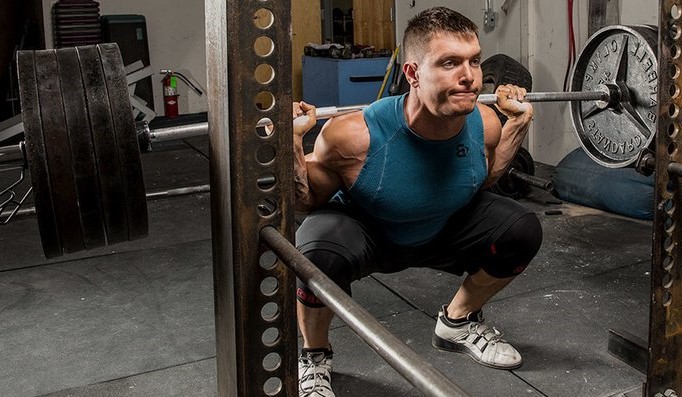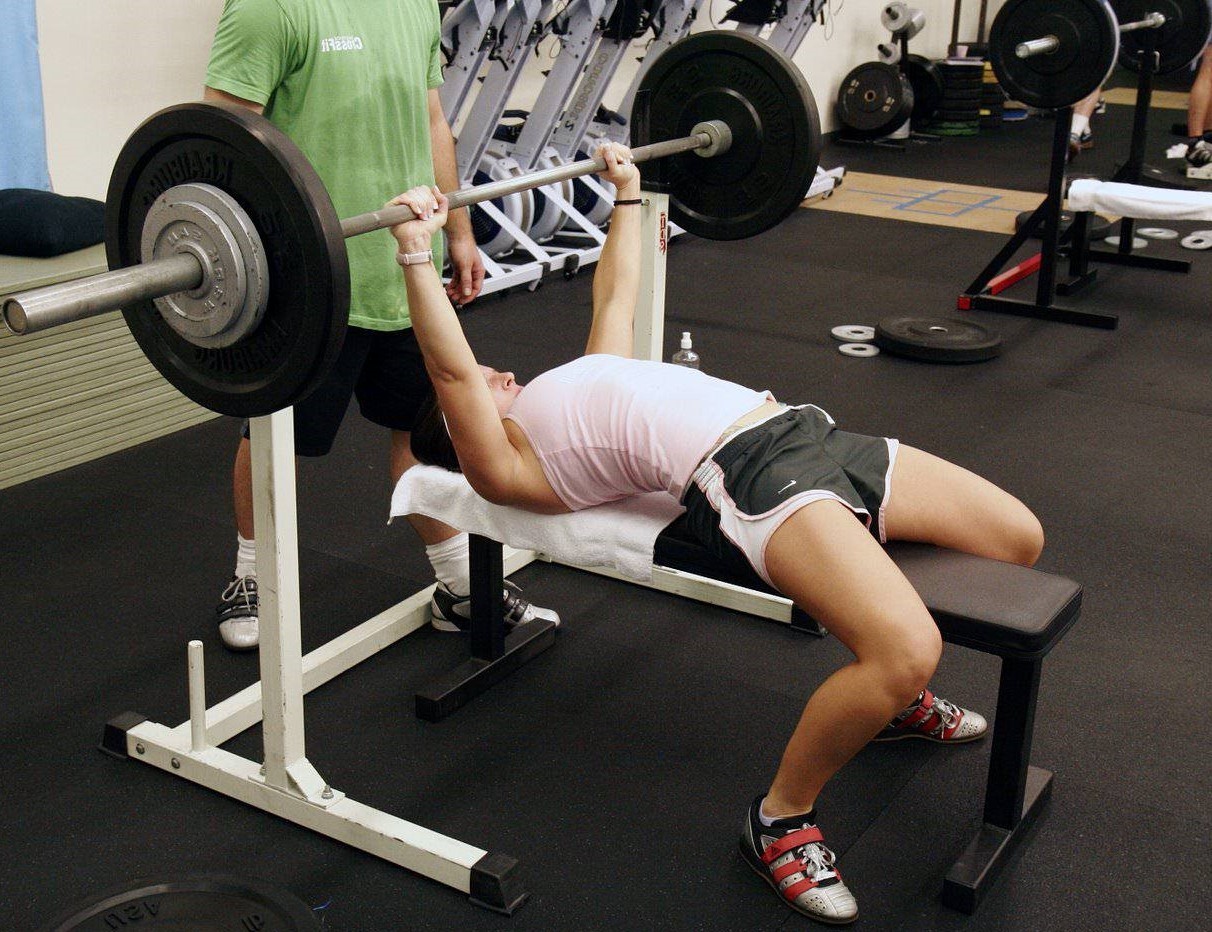There are a million ways to lift a barbell, but only very few effectively allow you to increase your strength and proficiency in the big three. Powerlifting is a sport about who can bench, squat, and deadlift the most weight within their given weight class, and the art of powerlifting isn’t in how much heart you put into your comp, but into how much thought you put into your training. The more reps you have under the barbell, the stronger you are – in theory. In reality, mindlessly grinding away at the gym won’t get you very far. You’ll go up, and up, and up – and eventually you’ll hit a point you can’t go past, and you’ll either injure yourself, wise up, or give up. That’s why it’s important to learn how to program. Today, I’ll give you a little introduction to programming by talking about the conjugate method.
Pioneered at Westside Barbell, a gym that’s grown famous for cranking out world records and may be a little infamous for other reasons, the conjugate training method is a response to Western periodization/linear periodization. Both work, but for different reasons, and with different shortcomings.
Linear Periodization and Conjugate Training
Linear or Western periodization is the way most athletes train strength. An LP program is built on mesocycles, each mesocycle focusing on a specific attribute to help the lifter get stronger in said attribute, before switching to another attribute, thus creating a pendulum effect as each slight gain works its way into the lifter’s repertoire come competition day. Different examples exist all over the internet, but the basics include:
• A hypertrophy phase, where the lifter trains in and around the 70-75% weight range.
• A strength phase, where the lifter trains in and around the 80-85% weight range.
• A power phase, where the lifter trains in and around the 90% weight range.
• The peak phase, including a pre-competition break and competition.
• This is followed usually by a total break, for a week or two.
Each total cycle may take anywhere from three to six months, depending on how the program is set up. As a lifter approaches their competition or peak phase, the overall volume of the program drops, and you start to mostly do singles.
This program has a major disadvantage, and that is that the lifter spends very little time actually training in the 90% and up range. Critics of the linear periodization or Western periodization system basically explain that by spending too little time training with actually heavy weight, the lifter’s potential is gimped. Furthermore, as the lifter switches between attributes, they also lose some of their benefit from each attribute. Training in hypertrophy ranges doesn’t contribute to strength directly – but it does create a base for strength. But once you switch to the strength phase, you start to lose some muscle gains as you’re no longer maintaining that hypertrophy. It’s a system that, for some lifters, eventually catches up to them.
The conjugate training method involves training four to five times a week, with a maximum effort and a dynamic effort day for the upper body and lower body. That means:
• Monday: Maximum Effort Upper
• Tuesday/Wednesday: Maximum Effort Lower
• Thursday: Dynamic Effort Upper
• Friday/Saturday: Dynamic Effort Lower
What exactly does that mean? Well, you structure it like most other workouts – one major exercise, a supplementary exercise, and then a few accessories. The major exercise on the maximum effort days in conjugate or Westside-style training isn’t necessarily one of the big three. It can be a major lift that has carryover to the powerlifting low-bar squat, like the front squat, safety bar squat, high-bar squat, sumo squat, Zercher squat, etc. Then, supplementary exercise would be something that targets a muscle group that improves whatever squat or deadlift variation you just did. If your hamstrings and glutes are doing most of the work, your supplementary exercise would be 5-6 reps on Romanian deadlifts. Finally, your accessories would be whatever else you need to do.
Dynamic effort days are a little more complicated. You work with much lower weight, but apply maximum effort to each lift, exploding out of the bottom. Bands and chains are used to give the lift variable resistance throughout the full range of motion, which not only improves lockout, but is meant to improve power – the ability to generate force through strength and acceleration.
Your Mileage May Vary
Conjugate training addresses the concerns of LP training by shortening the cycle. Each lifter’s workout is adapted to their weaknesses and strengths, and their total work capacity (including their available recovery resources, genetics, etc.). It’s important to play around with the training to see what works. By switching between different max effort lifts, you also keep it fresh and keep yourself from plateauing, while adding onto your big three. In theory, of course. I’ve never personally trained conjugate-style, because there are no bands and chains at my gym.
Pushing submaximal loads with maximum intensity does not produce the same feedback in the nerves and muscles as actually pushing maximum loads does, so it’s important to understand that while “speed squats” and “speed pulls” can have athletic carryover, they’re not purely a strength-building exercise. That’s what the maximal effort days are for, after all. The point of conjugate training is to create an effective training protocol that a lifter can use as a base, and build off of, much like Jim Wendler’s excellent 5/3/1 templates and myriad of advice he’s given on how to build a program around them.
How Should You Train?
There’s absolutely no way I can tell you how to train, but I can tell you what I’ve learned. I’ve learned that it’s okay to deviate from the program. It’s okay to go fuck it, and do some curls or rack pulls on a pulling or squatting day, when you’re feeling extra good and want to have some fun. It’s also alright to go a little heavier than planned with the weight, when it’s feeling really good.
It’s also fine to go lower, if you know it’s going to be a shit day, or to cut an accessory when you know you’re not in the right physical place to go through the full program. Pick something, work through it, adapt to it, and then switch if it isn’t getting you anywhere. Program-hopping as a beginner can kill your progress, but once you’re at an intermediate level, you have to play around to figure out what works best for you.
How I Train
As an intermediate lifter, I’m out of beginner phase, meaning I’m not exactly exploding gains out of my rear end month after month. But I’m still far from a foreseeable limit. The further you are from your feasible strength limit, the less specific you have to be with your training. To a certain degree, just training frequently and consistently is enough to get results. Adapting your training to overcome plateaus will work just fine up until a specific point. Once you reach that point, it’s time to innovate and experiment, and find something that works better.
Eventually, you’ll have to not only increase volume and intensity to overcome the rate at which your muscles are adapting, but you have to identify and address weak points or sticking points, figure out where you’re going wrong with your conditioning or your diet, take more time to recover, work out nagging pain issues, build muscles you might’ve previously ignored, and so on. While the squat, bench, and deadlift primarily involve most but not all of the muscles in the human body, getting stronger in a different movement with significant (but not perfect) carryover will improve your squat, bench, and/or deadlift, without making you continue to grind out said squats, bench presses, or deadlifts.
Ideally, we’d all sit down and get coached by an expert powerlifter. But few powerlifters have the time to coach others, and a lot of us don’t have the money to pay them. Still, a big part of the fun (to me) is figuring out what the next step is.
My training plan for the past year has been nSuns LP, a week-long “cycle” that can’t quite be called a cycle, and essentially calls for a 5/3/1 scheme followed by several back-up sets, a higher-rep supplemental exercise, and then a bunch of accessories to patch up weaknesses. Here’s a given Tuesday:
• Warmup and prehab.
• Squat: 75% x 5, 85% x 3, 95% x 1+, 90% x 3, 85% x 3, 80% x 3, 75% x 5, 70% x 5, 65% x 5
• Sumo Dead: 50% x 5, 60% x 5, 70% x 3, 70% x 5, 70% x 7, 70% x 4, 70% x 6, 70% x 8
• Accessories: Leg Press 15 x 3, Weighted Lunges 8 x 3, Pullups 10 x 4, Planks, Suitcase Carries
Every four weeks, I take a week off. I can’t adequately recover past that. Another thing I play around with is accessory volume. Sometimes I don’t do them, or I cut an exercise here or there. The main thing is to get my primary and supplementary lift, and to work the back (the program doesn’t have a lot of pulling).
It’s a tried-and-true program for me, and although it can be tough to get into at first, you do adjust to the volume. You can also adapt it as you please. For example, instead of increasing the weight every week, stick to the same weight for three weeks (one cycle) switching between different supplementary lifts and accessories, and then finally do a 5-10lbs jump on all lifts. This is effective for plateauing as well and doesn’t leave you with the mental anguish of missing a lift week after week.





